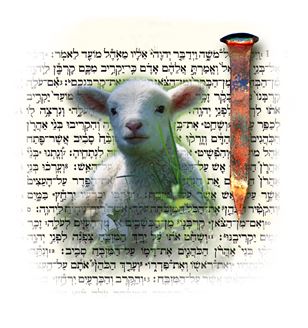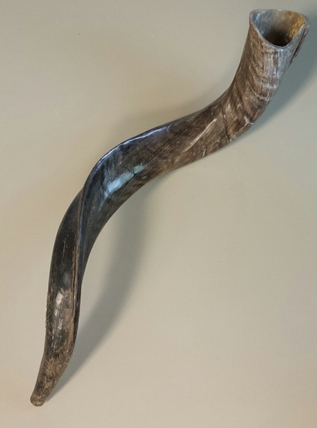The Call of the Shofar
Kevin Williams investigates the significance of the ram’s horn trumpet.
In this edition of Messianic Foundations, we’re going to take a look at the ram’s horn trumpet called the shofar in Hebrew. It has played an important role throughout Scripture, and will play a crucial role in the days that lie ahead as we wait for the return of the Messiah. We are going to look at some of the different ways the shofar was used, what symbolic representations it took on as Jewish theology was molded, and how all of these things might apply to us today. We’re going to cover:
- The Akedah (The Binding of Isaac)
- The Call to Repentance
- The Call to Assemble
- The Last Trumpet
Introduction

Messianic Foundations
Artwork by Steve Grier © 1997 RBC Ministries. Used by permission.
Over the last decade there has been a growing trend in churches to incorporate the shofar or ram’s horn into praise and worship. This uniquely stylized trumpet has become one of the few symbols in traditional Judaism which the church has felt comfortable adopting, and rightfully so. It has a meaningful position in our biblical heritage dating all the way back to Abraham, and plays a crucial role in prophetic events as believers in Messiah listen for the “last trump.”[1]
There are two basic types of shofars. The oldest, and still widely accepted type among much of the Orthodoxy (Chassidim), is short with one curve in it. The timbre is usually a “tenor” sound. The shofar gaining wider popularity is the more recent, long, gently curving and twisting Yemenite shofar. These produce a lush baritone sound that carries further and seems to be more desirable. The tone is produced in the same way a person blows a trumpet, by pressing the lips tightly together and making an “elephant” noise into the narrow opening. With a little practice, almost anyone can produce a sound. Some people can produce two or three notes, and one Israeli believer I know can play two at the same time!
The pictures, at least during the Temple period, are vivid. Imagine if you will, the walls of the Temple surrounding the outer most gates, lined shoulder to shoulder by levitical priests. Each has in his hand a shofar. The sun is sinking low in the western sky, casting the Holy City, Jerusalem, in a blazing golden hue against her sandstone buildings. For miles around the sacred mount, the gold topped Temple looks like fire. Your nose twitches with the fresh scent of the ketoret the holy incense now being burned on the altar of incense. “Soon,” you say to yourself, “Very soon now.”
 You cannot see it, but you know that somewhere in the middle of that column of smoke rising into the heavens, is the presence of the Almighty, the God of Israel. And where the Shekinah glory rests, is the Ark of the Covenant also known as the Tree of Life. Images of Moses at the burning bush spring to mind. Just as the tree would burn yet was not consumed, so it was now in Israel. The Tree of Life was burning with God’s holy presence, yet was not consumed. Rather the truth of the God of the Hebrews was spreading throughout the pagan world as gentile “God-fearers” were joining synagogues in ever-increasing numbers.
You cannot see it, but you know that somewhere in the middle of that column of smoke rising into the heavens, is the presence of the Almighty, the God of Israel. And where the Shekinah glory rests, is the Ark of the Covenant also known as the Tree of Life. Images of Moses at the burning bush spring to mind. Just as the tree would burn yet was not consumed, so it was now in Israel. The Tree of Life was burning with God’s holy presence, yet was not consumed. Rather the truth of the God of the Hebrews was spreading throughout the pagan world as gentile “God-fearers” were joining synagogues in ever-increasing numbers.
The sun sets and a quiet expectation rests on the Promised Land. The column of smoke has now become a pillar of fire, and the Temple no longer reflects the sun’s brilliance, but has become its emanating source as the external glory has become internal a foretaste of the coming One who whose light would be seen by all, and then radiate within the living temple.[2]
Category: Biblical Studies, Winter 2001


